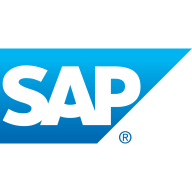

IBM SPSS Modeler and SAP Predictive Analytics are competitive analytics solutions known for their distinct advantages in the analytics software category. While IBM SPSS Modeler scores higher on pricing and support, SAP Predictive Analytics is favored due to its advanced features, considered worth its higher cost.
Features: IBM SPSS Modeler includes intuitive drag-and-drop functionality, comprehensive data preparation tools, and seamless model building. SAP Predictive Analytics offers sophisticated automation, scalability, and complex predictive modeling capabilities suitable for large enterprise environments.
Ease of Deployment and Customer Service: IBM SPSS Modeler allows simplified deployment with extensive integration options for quick installation and setup, complemented by responsive and expert customer service. SAP Predictive Analytics provides flexible deployment models and robust support, albeit with a potentially longer setup time due to the resources required.
Pricing and ROI: IBM SPSS Modeler presents a competitive setup cost, providing an attractive initial investment with solid ROI for cost-efficient businesses. SAP Predictive Analytics requires a higher initial expenditure but delivers significant ROI through its predictive capabilities and scalability, favored by enterprises seeking long-term value.
| Product | Market Share (%) |
|---|---|
| IBM SPSS Modeler | 3.7% |
| SAP Predictive Analytics | 0.9% |
| Other | 95.4% |
| Company Size | Count |
|---|---|
| Small Business | 9 |
| Midsize Enterprise | 4 |
| Large Enterprise | 32 |
IBM SPSS Modeler is an extensive predictive analytics platform that is designed to bring predictive intelligence to decisions made by individuals, groups, systems and the enterprise. By providing a range of advanced algorithms and techniques that include text analytics, entity analytics, decision management and optimization, SPSS Modeler can help you consistently make the right decisions from the desktop or within operational systems.
Buy
https://www.ibm.com/products/spss-modeler/pricing
Sign up for the trial
https://www.ibm.com/account/reg/us-en/signup?formid=urx-19947
SAP® Predictive Analytics software brings predictive insight to business users, analysts, data scientists, and developers in your company. Unlock the potential of Big Data from virtually any source with the power of predictive automation. By automating the building and management of sophisticated predictive models to deliver insight in real time, this software makes it easier to make better, more profitable decisions across the enterprise.
We monitor all Data Science Platforms reviews to prevent fraudulent reviews and keep review quality high. We do not post reviews by company employees or direct competitors. We validate each review for authenticity via cross-reference with LinkedIn, and personal follow-up with the reviewer when necessary.